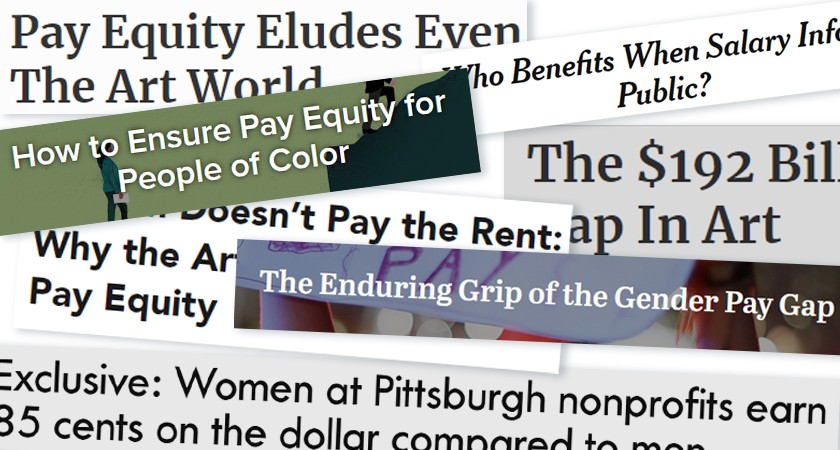The Greater Pittsburgh Arts Council commits to no longer share job openings without salary info
It’s time for arts and culture organizations to collectively champion pay equity and transparency. That’s why the Greater Pittsburgh Arts Council is proud to announce that starting in August, we will exclusively share employment opportunities that include salary information in their job descriptions.
Recognizing the importance of leading by example, the Arts Council already has an operational policy that stipulates we include pay and salary structure as standard information in our own job postings. This was only the first step, with many to follow, as we pursue sustained equity throughout our organization and set the table for closing any existing disparity gaps.
Moving forward, we will no longer share any job openings from external organizations that don’t include a listed salary or pay rate. This includes the opportunities we share on our social media pages and in our blog’s monthly Job Round Ups, our most-read posts each month. We also commit to doing direct outreach with arts and culture organizations that aren’t currently including pay rates and encouraging them to do so for the following reasons:
Pay transparency in job listings helps combat the historic issue of women and BIPOC folks being underpaid for the same labor
This also helps prevent these groups from being perceived negatively when advocating for themselves in pay negotiations due to implicit bias, according to our Director of Research and Special Projects Morgan Kasprowicz.
Jackie Baker, co-founder of Workhorse Collaborative, a Pittsburgh-based arts and nonprofit consulting firm that has also taken a pledge not to share job posts without a transparent salary range, says there is plenty of research to show that not disclosing salary ranges with job posts increases the gender wage gap and discriminates against people of color.
Posting your pay range ensures that organizations and candidates are empowered to use their time wisely
Including a salary range or, even better, the exact salary and benefits when listing a job opening allows applicants to decide ahead of time whether they can afford to apply for a position, according to Art + Museum Transparency, a workers activist group composed of a collective of art and museum workers, in If Culture Sector Employers Want Equality, Post Salary and Benefits With Job Descriptions.
“This also saves time for employers,” they add. “It means that they waste far less time sifting through the pile of applicants who rush to apply for open positions in a field where demand for jobs far outstrips the supply.”
Earlier this year, the New York Times backed up this sentiment in Who Benefits When Salary Info Is Public?, posting that candidates who responded to ads with salary ranges seemed like a better fit to a listed position than others who previously applied with higher salary expectations.
Arts and culture organizations must move beyond the “pay your dues” methodology
It’s important to note that while it’s an important first step, pay transparency alone doesn’t resolve inequities.
In Passion Doesn’t Pay the Rent: Why the Arts Must Embrace Pay Equity, a piece published this week by Nonprofit Quarterly, the importance of moving away from the longtime concept of artists needing to pay their dues to make it in the field is stressed.
Bonus: Including pay transparency is free
Adding salary information to your job openings and call for artists is an equitable practice that employers can immediately implement at no cost to their organization. We encourage all Western Pennsylvania arts and culture organizations to join us in embracing salary disclosure on their job postings as a service to the artists we serve and the arts administrators who are so crucial to our local arts economy.
To send us your Job Opening or Call for Artists for consideration in our next Job Round Up, please submit your information – including salaries – on this form: Arts and Culture Job Openings
* Morgan Kasprowicz, director of research and special projects, contributed to this report


